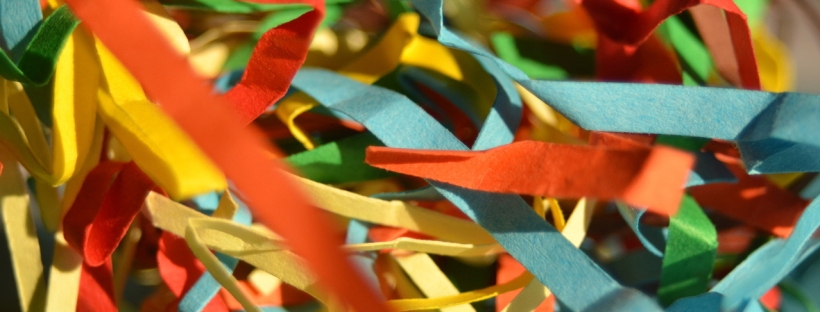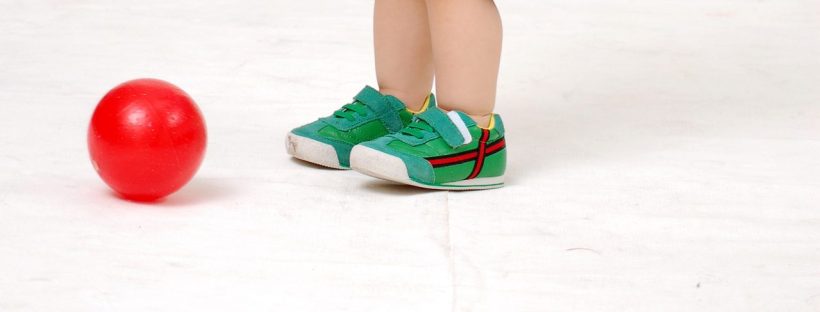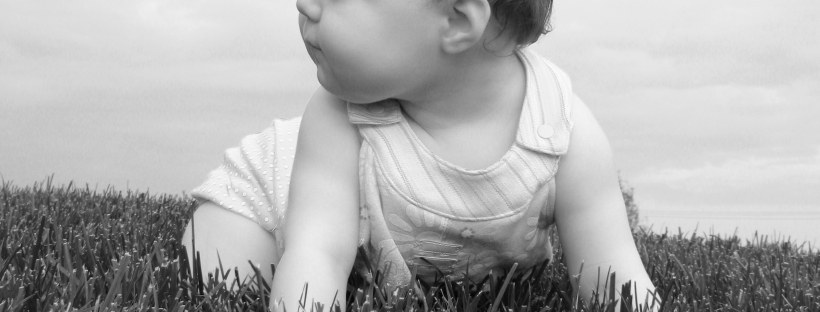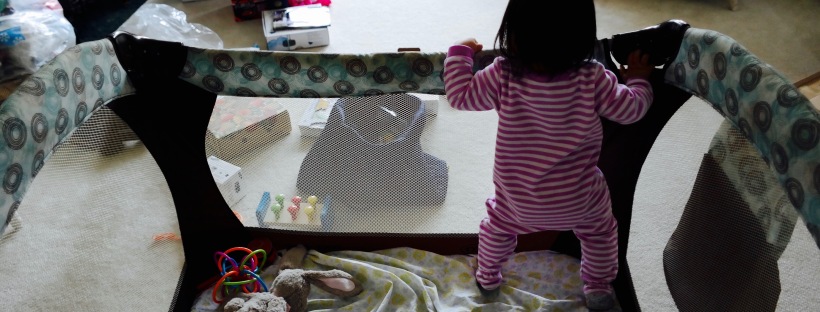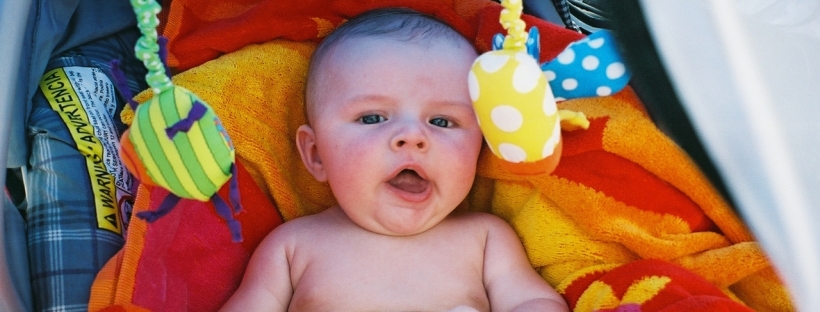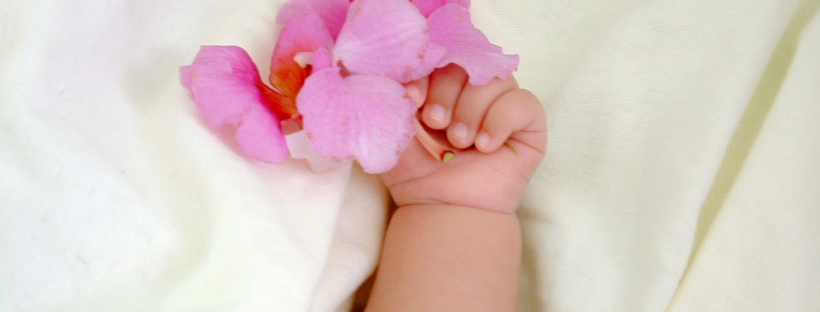Put paper into a shredder if you have one. Otherwise, cut paper into long thin pieces. You can use a variety of paper. For instance, construction paper, printer paper, magazine sheets, scrap paper, or newspaper. Then put it all in a tub where he can play away. He will be transfixed with pulling the paper apart and feeling how it crumples together.
Category: Motor Baby Activities
Roll the Ball Baby Game
As those of you with glasses can attest (why-o-why Grandma!), sight is hereditary. But wait! Experience has a huge role too! Especially in learning and sharpening many visual abilities, such as shape, size, and spatial orientation skills; fine & large movement coordination skills; and visual abstraction skills. Experience has its biggest impact on kids’ visual abilities until the age of 2 and tapers off until 8 or so years old. Make sure to let your baby’s eyes get exposed to a variety of situations, details, features, and so on. Many of these visual experiences can easily be paired with fun activities or engaging other senses!
Take a ball and roll it back and forth between you and him. Sitting in a straddle position with his legs out will be easy for the ball to stay within his reach. Take turns rolling it back and forth to each other. As he gets older, make the distance greater between you two. For instance, if he is 9 months, maybe only sit a couple of feet apart. If he is 2 years old, you could go half way across the room, and he can even stand to catch the rolling ball!
9-24M
See, Reach, Touch Infant Activity
Your baby has been rigorously practicing reaching and grabbing, and with all the swatting at toys, they have finally been able to successfully reach and grab (on average starts around 4-5months)and maybe even do this consistently and in a very controlled fashion(starts around 6-7months). Continue to let them hone their skills through fun practice of reaching for what they want. This also stimulates their sense of vision and touch!
Offer a variety of objects that differ in size, shape, and texture. Let her feel what it is like to hold a smooth ball versus an object with corners; a small toy that she can easily hold in one hand or a larger toy requiring to use two hands; a toy that has different parts that dangle versus a solid object, to name just a few examples. Be careful not to overwhelm her with too many toy options. Pick 3-5 toys on which she can focus. Who knows, she may even reach for 2 toys for each hand!
3-9M
Pincer Grasp Baby Activities
Depending on your baby, can maybe try these activities as young as 6 months. Usually around 9 months, however, is when the pincer grasp may first be developing.
Baby is a pro at reaching and grabbing what they want! The next fine motor milestone programmed in their DNA, is the pincer grasp- grabbing with the thumb and finger. Before they may have successfully grabbed small objects by scooping and tightly grabbing with their palm. But now, they will realize and practice the finer movement of grabbing with their fingers. You can help them along with this motor skill development by fun play activities to introduce and refine the pincer grasp.
Your baby loves to squeeze, push and pull things apart. Luckily, this helps her strengthen those little muscles of her hand.
- Let her squirt and squeeze those bath toys
- Squeeze squishy balls
- Play with Mega Blocks
- Embed toys in playdoh and have her pull them out
The act of pointing or poking is a great first step. It helps isolate that pointer finger.
- Play with your baby and ask her to point at birds or planes she sees; point at pictures in books; or point at cheerios on her plate. Take at least 5 minutes to do this
- Push holes in play dough, the rug or carpet or squish food. Take at least 10 minutes to do this
- Poke at toys with buttons, holes, or switches. Take at least 5-10 minutes to do this
Crawling- Proprioception Exercises
Proprioception exercises for baby aims to let them feel or gain a sense of what their body will feel like in a certain movement (such as crawling, rolling) before actually doing the movement. It is useful to help teach baby what they can do or even help their movements become more efficient or inline. When your baby becomes more aware of a specific sensation or part of their body, they are more likely to use them.
If your little one has not yet crawled or is belly crawling or scooting, you can try this proprioception exercise. Take turns gently squeezing each of his knees, specifically the area he will bear weight when he is in the crawling position. Let him get a clear feeling of how his muscles and bones feel in this area. Do the same for his hands, specifically the palm or heel of his hands. Do this for at least 3-5 minutes.
9-10 Months
Pulling to Stand
Your baby may be pulling to a standing position at this point. They may or may not be crawling or cruising yet, but they use their arm muscles and begin to pull their body up as their legs push down. Here is a way to help your baby along the way.
You can help your baby by activating his body through touch to let him learn the appropriate sensations necessary for an optimal stance. Lay him down and take one heel. With your thumb, firmly press on the center of his heel. Repeat a few times and then do the other heel. This physical therapy technique helps at any stage, regardless if the baby is at the cusp of pulling to stand or already pulling to stand. The touch associated with his heel will teach his body to learn an appropriate standing position that gives him an optimal chance of power in his legs and balance.
8-12 Months
Lessons on Sitting Motor Baby Activity
The months of play times on their tummy and perfecting their roll has now set your baby up to sit on their own. Some parents will put their baby in the sitting position and catch them when they topple over. This usually means the baby is not truly ready to sit on their own. Babies’ muscles need to be strong enough to hold their body upright, with good posture and alignment of the spine, while fending off gravity. Babies need to perfect the art of rolling both ways before they can tackle more advanced skills such as: pushing to sit from laying down or getting out of the sitting position.
If your baby has not learned to roll both ways yet, focus on practicing that versus letting her sit prematurely. Allow her to develop the muscles and balance to push herself to a sitting position. If your baby is rolling both ways and is beginning to try to push to sit, encourage and support her just enough to help the learning process while allowing her to exercise those muscles and doing it on her own giving her a sense of independence. If your baby has been able to sit, allow her to perfect this skill and movement through enticing her to sit up or lay back down through play. This will help your baby not just meet but master this milestone.
6-9 Months
Hands & Feet Motor Baby Activity
What a discovery when babies are able to grab their little feet! This is an important motor skill development! Have fun with your little one with a game!
Bring her feet together as if they were clapping together. When they come together, make a big facial expression to show your excitement and describe what you are doing. Continue to open and close her feet all while talking to her and making facial expressions so she knows you like what she is doing. You can even touch her hands and bring them towards her feet so she grabs her own feet. Giving her positive feedback while touching her hands and feet brings her attention to these sensations and increases her awareness of these body parts.
4-8 Months
Batting Hand to Grabbing Hands Motor Baby Activity
Your baby is still learning to successfully grab onto what they want. They may not be able to yet, but they’re working on this skill by batting at toys repetitively. Help them develop their hand-eye coordination as well as their grabbing and holding skills through fun enticing toys!
She will notice what she wants, and it seems like nothing will stop her from trying to reach and grab ahold of it. Encourage her to reach for objects by safely placing a stick across her crib with 2-3 different objects safely tied to the stick. Choose toys you think she will want to play with. Make sure the objects are within her sight, reach, and touch. Throughout her play, talk to her. Describe what she is doing, describe what the toy she is trying to grab looks or feels like, or give her encouraging words. Make sure you are watching the safety of your child and do not leave any cords or strings alone with her in the crib.
1- 5 Months
Holding- A New Idea!
Right now your baby’s hands are most likely tightly clenched in little fists. When you apply pressure or stimulation to their palms, their hands automatically close tightly. This is called reflexive grasping- they are not doing it voluntarily. In no time, they will be opening and closing their little hands whenever they want and examining whatever object they have chosen to hold on to. In the meantime, help your baby feel different objects in their hand and get the sensation of holding.
Find a little toy that he will be able to hold on to and that you know interests him. Show him the toy and engage his interest by describing the toy or what you are about to do. For example: “Look at this rattle! It is very shiny and makes noise (shake, shake, shake). Would you like to hold it? Looks like you do! Mommy help.” Then touch the toy on the inside of his palm so that his fingers reflexively close around it. If he drops it, hand it back to him and speak loving words when you do.
0-3M
